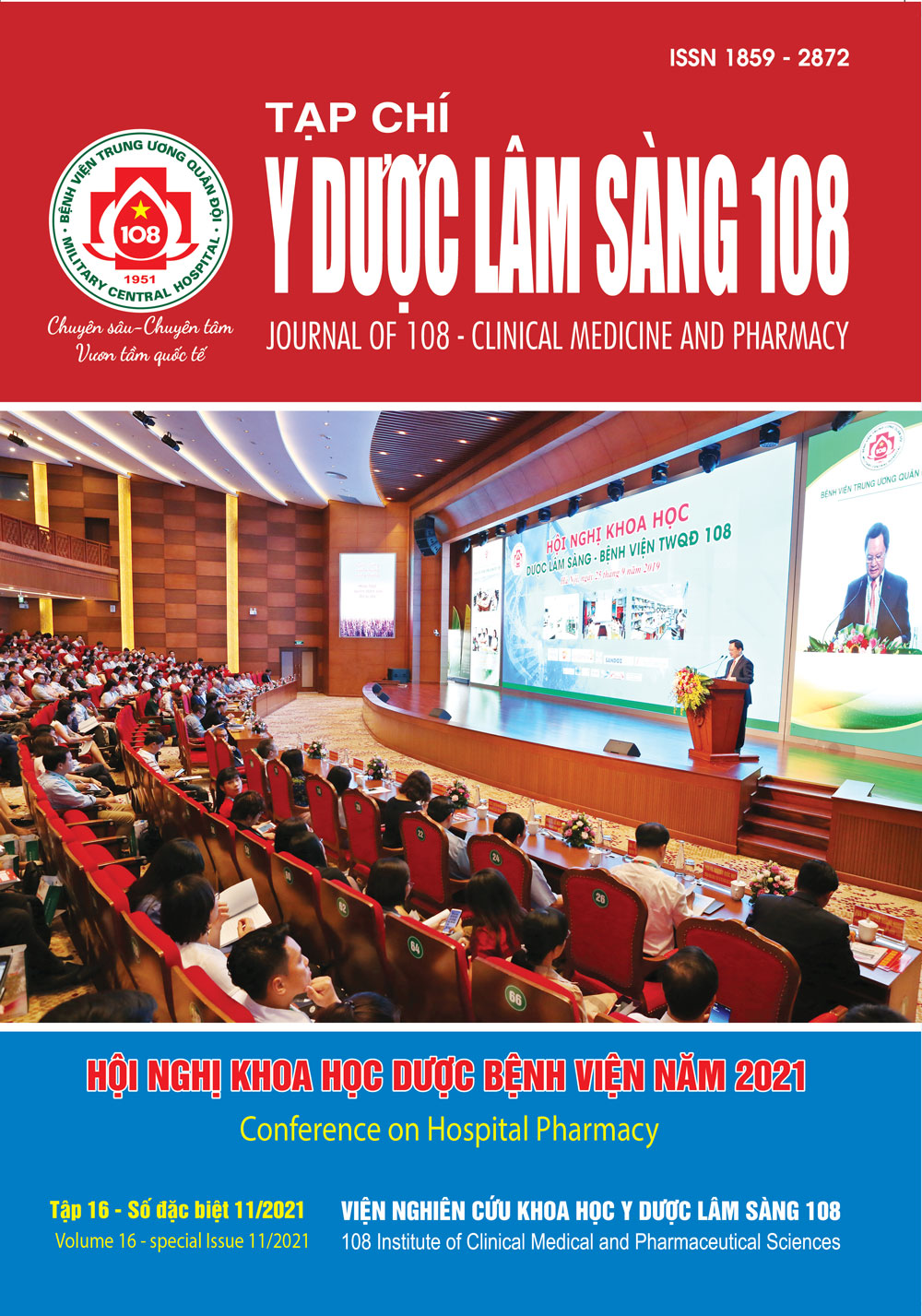Safety of amphotercin B deoxycholate and prophylaxis treatment for adverse events: A cohort study
Main Article Content
Keywords
Abstract
Objective: To evaluate adverse events (AEs) of amphotericin B deoxycholate (AmB-d) in the treatment of invasive fungal infections. We also assess the role of loading sodium chloride 0.9% in reduction of AmB-d induced nephrotoxic and the use of pretreatment regimens for the prophylaxis of infusion-related reactions. Subject and method: This retrospective study in inpatients treated with AmB-d at the National Lung Hospital between 01/1/2018 and 31/8/2020. Result: Out of 119 patients, the proportion of patients experiencing AEs related to clinical symptoms and laboratory tests were 24% and 90%, respectively. The number of patients who had the infusion-related reaction, hypokalemia, nephrotoxicity were 23 (19%), 79 (66%), and 48 (40%), respectively. The treatment of saline 0.9% associated with the reduction of 5.24µmol of serum creatinine (beta= -5.24µmol; 95% CI: -9.29 - -1.19, p=0.011), while the use of pretreatment regimens associated with the reduction of infusion-related reaction (OR = 0.08, 95%CI: 0.03 - 0.28, p<0.001). Conclusion: It is important to monitor AEs during the treatment of AmB-d. Preliminary assessment the use of saline 0.9% and pretreatment regimens could reduce AmB-d induced nephrotoxicity and infusion-related reactions.
Article Details
References
2. Cabrales-Vargas Rafael Laniado-Laborín Maria Noemí (2009) Amphotericin B: Side effects and toxicity. Rev Iberoam Micol 26(4): 223-227.
3. Deray G, Mercadal L, Bagnis C (2002) Nephrotoxicity of amphotericin B. Nephrologie 23(3): 119-122.
4. Health Organisation World (2011) Rapid advice: Diagnosis, prevention and management of cryptococcal disease in HIV-infected adults, adolescents and children. Geneva, Switzerland.
5. Karimzadeh I, Farsaei S et al (2012) Are salt loading and prolonging infusion period effective in prevention of amphotericin B-induced nephrotoxicity?. Expert Opin Drug Saf 11(6): 969-983.
6. Paterson DL, David K et al (2008) Pre-medication practices and incidence of infusion-related reactions in patients receiving AMPHOTEC: Data from the patient registry of amphotericin b cholesteryl sulfate complex for injection clinical tolerability (PRoACT) registry. J Antimicrob Chemother 62(6): 1392-400.
7. Rodica Turcu Maria Jevitz Patterson & Said Omar (2009) Influence of sodium intake on Amphotericin B-induced nephrotoxicity among extremely premature infants. Pediatric Nephrology 24: 497-505.
8. Services National Institute of Allergy and Infectious Diseases National Institutes of Health US Department of Health and Human (2017) Division of AIDS (DAIDS) table for grading the severity of adult and pediatric adverse events. Corrected Version 2.1.
9. Vildan Gursoy Fahir Ozkalemkas (2021) Conventional amphotericin b associated nephrotoxicity in patients with hematologic malignancies. Cureus, 13(7): 16445. doi:10.7759/ cureus.16445.
 ISSN: 1859 - 2872
ISSN: 1859 - 2872
